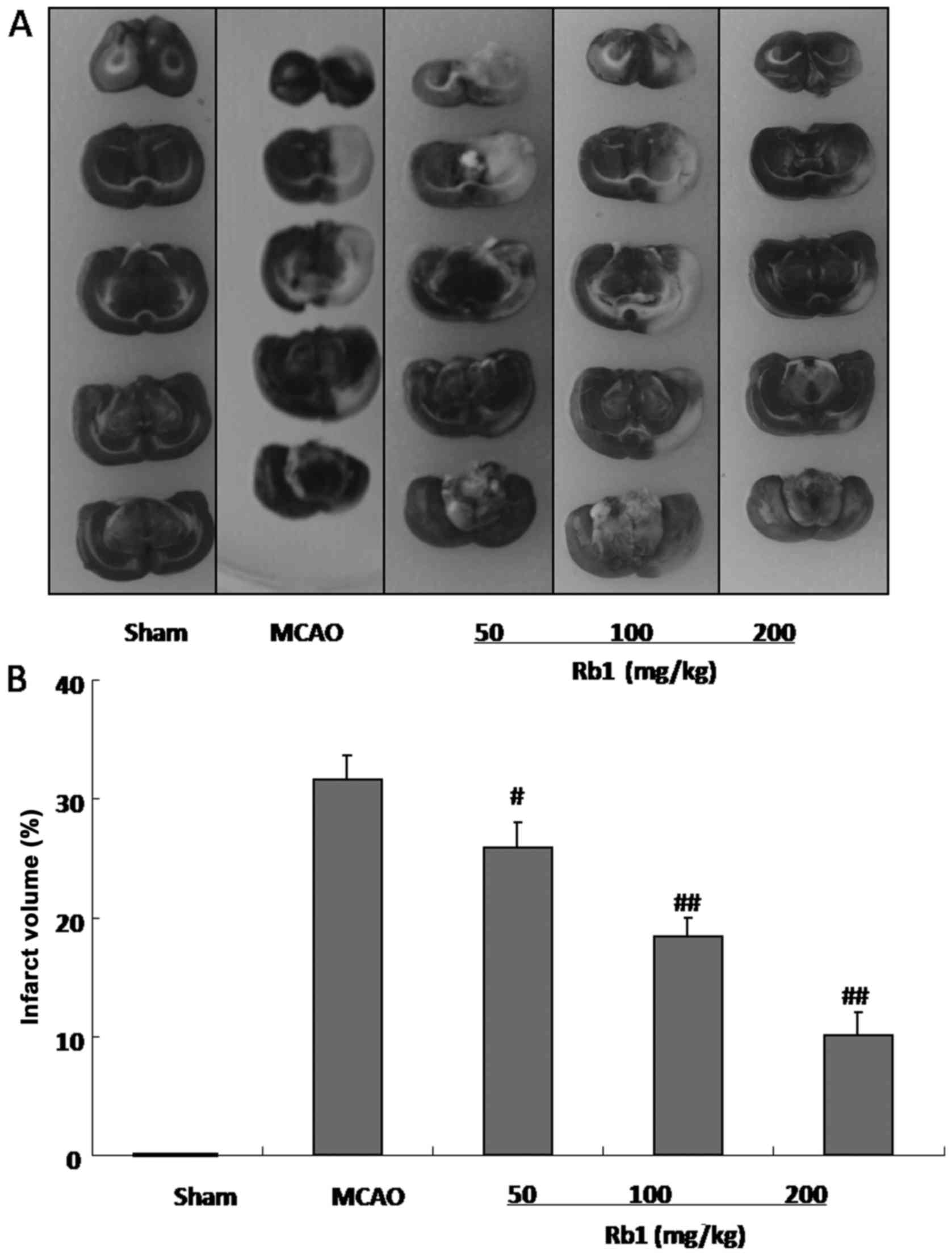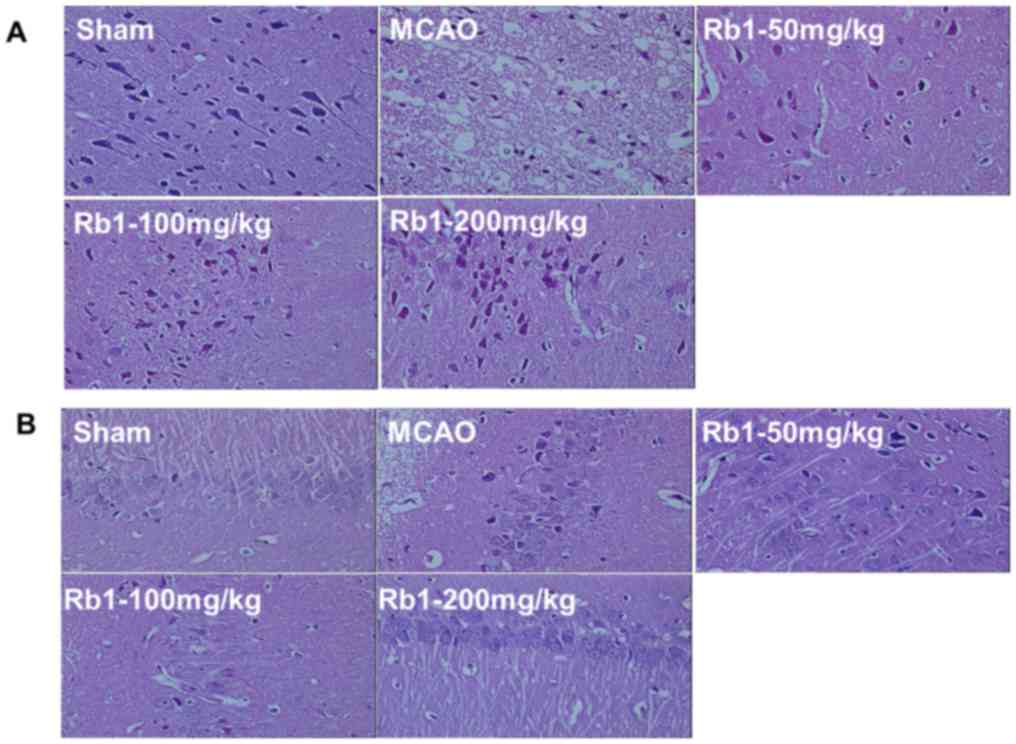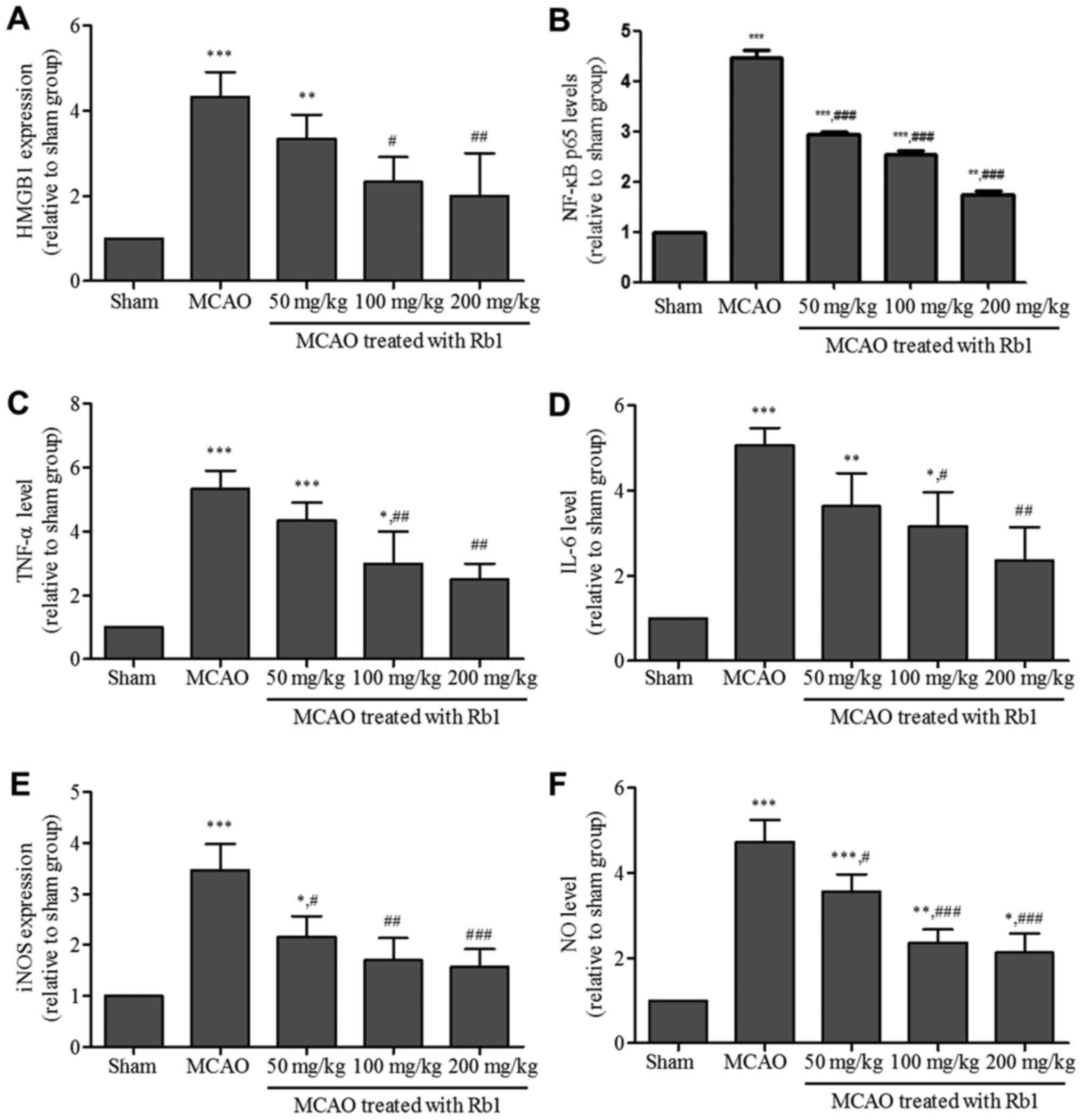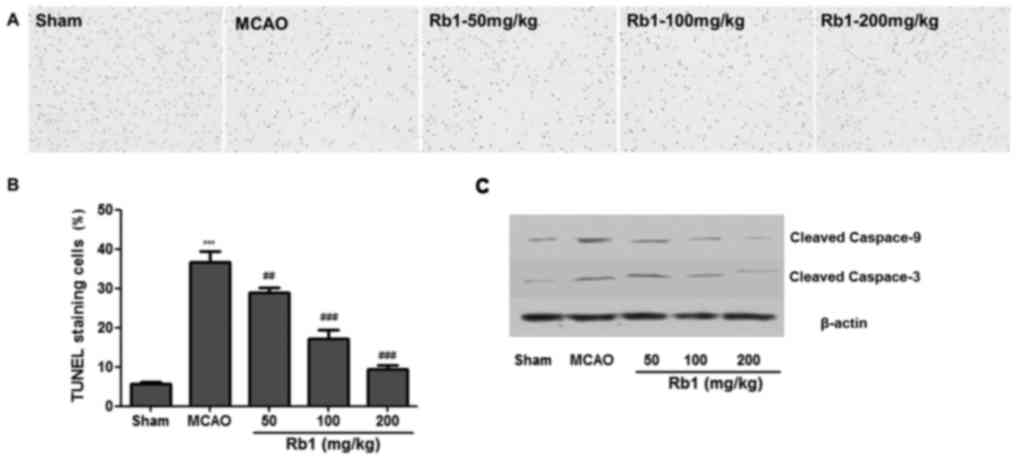|
1
|
Zevallos J, Santiago F, González J,
Rodríguez A, Pericchi L, Rodríguez-Mercado R and Nobo U: Burden of
stroke in puerto rico. Int J Stroke. 10:117–119. 2015. View Article : Google Scholar : PubMed/NCBI
|
|
2
|
Shi GD, OuYang YP, Shi JG, Liu Y, Yuan W
and Jia LS: PTEN deletion prevents ischemic brain injury by
activating the mTOR signaling pathway. Biochem Biophys Res Commun.
404:941–945. 2011. View Article : Google Scholar : PubMed/NCBI
|
|
3
|
Cronin CA: Intravenous tissue plasminogen
activator for stroke: a review of the ECASS III results in relation
to prior clinical trials. J Emerg Med. 38:99–105. 2010. View Article : Google Scholar : PubMed/NCBI
|
|
4
|
Kirmani JF, Alkawi A, Panezai S and Gizzi
M: Advances in thrombolytics for treatment of acute ischemic
stroke. Neurology. 79:S119–S125. 2012. View Article : Google Scholar : PubMed/NCBI
|
|
5
|
Sun K, Fan J and Han J: Ameliorating
effects of traditional Chinese medicine preparation, Chinese
materia medica and active compounds on ischemia/reperfusion-induced
cerebral microcirculatory disturbances and neuron damage. Acta
Pharm Sin B. 5:8–24. 2015. View Article : Google Scholar : PubMed/NCBI
|
|
6
|
Xue X, Qu XJ, Yang Y, Sheng XH, Cheng F,
Jiang EN, Wang JH, Bu W and Liu ZP: Baicalin attenuates focal
cerebral ischemic reperfusion injury through inhibition of nuclear
factor κB p65 activation. Biochem Biophys Res Commun. 403:398–404.
2010. View Article : Google Scholar : PubMed/NCBI
|
|
7
|
Jung NP and Jin SH: Studies on the
physiological and biochemical effect of Korean ginseng. Korean J
Ginseng Sci. 20:431–471. 1996.
|
|
8
|
Li C, Zhu Y, Guo X, Sun C, Luo H, Song J,
Li Y, Wang L, Qian J and Chen S: Transcriptome analysis reveals
ginsenosides biosynthetic genes, microRNAs and simple sequence
repeats in Panax ginseng C. A. Meyer. BMC Genomics. 14:2452013.
View Article : Google Scholar : PubMed/NCBI
|
|
9
|
Zhang J, Han X, Li X, Luo Y, Zhao H, Yang
M, Ni B and Liao Z: Core-shell hybrid liposomal vesicles loaded
with panax notoginsenoside: Preparation, characterization and
protective effects on global cerebral ischemia/reperfusion injury
and acute myocardial ischemia in rats. Int J Nanomedicine.
7:4299–4310. 2012. View Article : Google Scholar : PubMed/NCBI
|
|
10
|
Longa EZ, Weinstein PR, Carlson S and
Cummins R: Reversible middle cerebral artery occlusion without
craniectomy in rats. Stroke. 20:84–91. 1989. View Article : Google Scholar : PubMed/NCBI
|
|
11
|
Wei X, Liu H, Sun X, Fu F, Zhang X, Wang
J, An J and Ding H: Hydroxysafflor yellow A protects rat brains
against ischemia-reperfusion injury by antioxidant action. Neurosci
Lett. 386:58–62. 2005. View Article : Google Scholar : PubMed/NCBI
|
|
12
|
Okuno S, Saito A, Hayashi T and Chan PH:
The c-Jun N-terminal protein kinase signaling pathway mediates Bax
activation and subsequent neuronal apoptosis through interaction
with Bim after transient focal cerebral ischemia. J Neurosci.
24:7879–7887. 2004. View Article : Google Scholar : PubMed/NCBI
|
|
13
|
Park EK, Choo MK, Oh JK, Ryu JH and Kim
DH: Ginsenoside Rh2 reduces ischemic brain injury in rats. Biol
Pharm Bull. 27:433–436. 2004. View Article : Google Scholar : PubMed/NCBI
|
|
14
|
Huang XP, Qiu YY, Wang B, Ding H, Tang YH,
Zeng R and Deng CQ: Effects of Astragaloside IV combined with the
active components of Panax notoginseng on oxidative stress injury
and nuclear factor-erythroid 2-related factor 2/heme oxygenase-1
signaling pathway after cerebral ischemia-reperfusion in mice.
Pharmacogn Mag. 10:402–409. 2014. View Article : Google Scholar : PubMed/NCBI
|
|
15
|
Ye R, Kong X, Yang Q, Zhang Y, Han J, Li
P, Xiong L and Zhao G: Ginsenoside rd in experimental stroke:
superior neuroprotective efficacy with a wide therapeutic window.
Neurotherapeutics. 8:515–525. 2011. View Article : Google Scholar : PubMed/NCBI
|
|
16
|
Zheng C, Liu C, Wang W, Tang G, Dong L,
Zhou J and Zhong Z: Ethanol extracts from Portulaca oleracea L.
attenuated ischemia/reperfusion induced rat neural injury through
inhibition of HMGB1 induced inflammation. Am J Transl Res.
8:5016–5024. 2016.PubMed/NCBI
|
|
17
|
Jin YC, Kim SW, Cheng F, Shin JH, Park JK,
Lee S, Lee JE, Han PL, Lee M, Kim KK, et al: The effect of
biodegradable gelatin microspheres on the neuroprotective effects
of high mobility group box 1 A box in the postischemic brain.
Biomaterials. 32:899–908. 2011. View Article : Google Scholar : PubMed/NCBI
|
|
18
|
Kim SW, Jin Y, Shin JH, Kim ID, Lee HK,
Park S, Han PL and Lee JK: Glycyrrhizic acid affords robust
neuroprotection in the postischemic brain via anti-inflammatory
effect by inhibiting HMGB1 phosphorylation and secretion. Neurobiol
Dis. 46:147–156. 2012. View Article : Google Scholar : PubMed/NCBI
|
|
19
|
Kim JW, Jin YC, Kim YM, Rhie S, Kim HJ,
Seo HG, Lee JH, Ha YL and Chang KC: Daidzein administration in vivo
reduces myocardial injury in a rat ischemia/reperfusion model by
inhibiting NF-kappaB activation. Life Sci. 84:227–234. 2009.
View Article : Google Scholar : PubMed/NCBI
|
|
20
|
Yang L, Tao LY and Chen XP: Roles of
NF-kappaB in central nervous system damage and repair, Neurosci.
Bull. 23:307–313. 2007.
|
|
21
|
Park JS, Svetkauskaite D, He Q, Kim JY,
Strassheim D, Ishizaka A and Abraham E: Involvement of toll-like
receptors 2 and 4 in cellular activation by high mobility group box
1 protein. J Biol Chem. 279:7370–7377. 2004. View Article : Google Scholar : PubMed/NCBI
|
|
22
|
Li X, Hu X, Wang J, Xu W, Yi C, Ma R and
Jiang H: Short-term hesperidin pretreatment attenuates rat
myocardial ischemia/reperfusion injury by inhibiting high mobility
group box 1 protein expression via the PI3K/Akt pathway. Cell
Physiol Biochem. 39:1850–1862. 2016. View Article : Google Scholar : PubMed/NCBI
|
|
23
|
Andersson U, Wang H, Palmblad K, Aveberger
AC, Bloom O, Erlandsson-Harris H, Janson A, Kokkola R, Zhang M,
Yang H and Tracey KJ: High mobility group 1 protein (HMG-1)
stimulates proinflammatory cytokine synthesis in human monocytes. J
Exp Med. 192:565–570. 2000. View Article : Google Scholar : PubMed/NCBI
|
|
24
|
ATuttolomondo A, Pecoraro R, Casuccio A,
Di Raimondo D, Buttà C, Clemente G, Della Corte V, Guggino G, Arnao
V, Maida C, et al: Peripheral frequency of CD4+ CD28-cells in acute
ischemic stroke: Relationship with stroke subtype and severity
markers. Medicine (Baltimore). 94:e812015.
|
|
25
|
Tuttolomondo A, Pedone C, Pinto A, Di
Raimondo D, Fernandez P, Di Sciacca R and Licata G: Gruppo Italiano
di Farmacoepidemiologia dell'Anziano (GIFA) researchers. Predictors
of outcome in acute ischemic cerebrovascular syndromes: The GIFA
study. Int J Cardiol. 125:391–396. 2008. View Article : Google Scholar : PubMed/NCBI
|
|
26
|
Hu GQ, Du X, Li YJ, Gao XQ, Chen BQ and Yu
L: Inhibition of cerebral ischemia/reperfusion injury-induced
apoptosis: Nicotiflorin and JAK2/STAT3 pathway. Neural Regen Res.
12:96–102. 2017. View Article : Google Scholar : PubMed/NCBI
|
|
27
|
Li P, Nijhawan D, Budihardjo I,
Srinivasula SM, Ahmad M, Alnemri ES and Wang X: Cytochrome c and
dATP-dependent formation of Apaf-1/caspase-9 complex initiates an
apoptotic protease cascade. Cell. 91:479–489. 1997. View Article : Google Scholar : PubMed/NCBI
|
|
28
|
Polster BM and Fiskum G: Mitochondrial
mechanisms of neural cell apoptosis. J Neurochem. 90:1281–1289.
2004. View Article : Google Scholar : PubMed/NCBI
|
|
29
|
Zhang HL, Gu ZL, Savitz SI, Han F,
Fukunaga K and Qin ZH: Neuroprotective effects of prostaglandin
A(1) in rat models of permanent focal cerebral ischemia are
associated with nuclear factor-kappaB inhibition and peroxisome
proliferator-activated receptor-gamma up-regulation. J Neurosci
Res. 86:1132–1141. 2008. View Article : Google Scholar : PubMed/NCBI
|
|
30
|
Hu X, Cui B, Zhou X, Xu C, Lu Z and Jiang
H: Ethyl pyruvate reduces myocardial ischemia and reperfusion
injury by inhibiting high mobility group box 1 protein in rats. Mol
Biol Rep. 39:227–231. 2012. View Article : Google Scholar : PubMed/NCBI
|
|
31
|
Nurmi A, Lindsberg PJ, Koistinaho M, Zhang
W, Juettler E, Karjalainen-Lindsberg ML, Weih F, Frank N,
Schwaninger M and Koistinaho J: Nuclear factor-kappaB contributes
to infarction after permanent focal ischemia. Stroke. 35:987–991.
2004. View Article : Google Scholar : PubMed/NCBI
|
|
32
|
Zhou JQ, Qiu T, Zhang L, Chen ZB, Wang ZS,
Ma XX and Li D: Allopurinol preconditioning attenuates renal
ischemia/reperfusion injury by inhibiting HMGB1 expression in a rat
model. Acta CBras. 31:176–182. 2016.
|


















